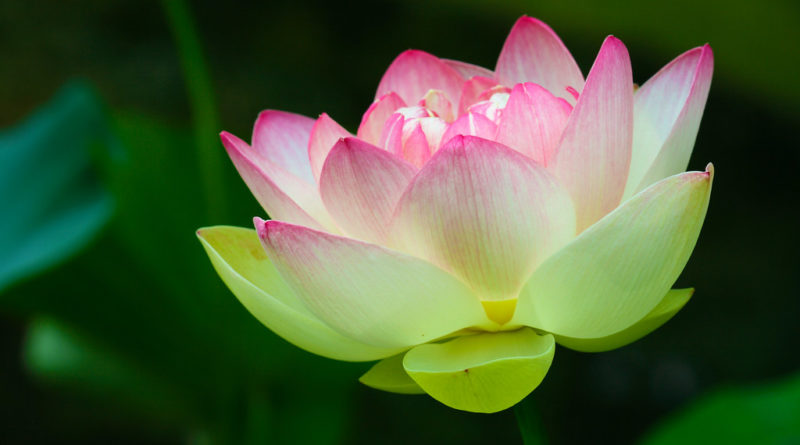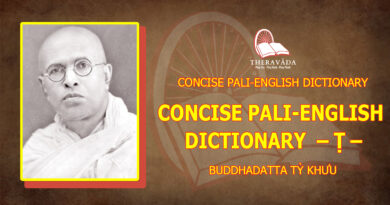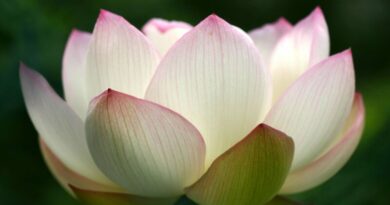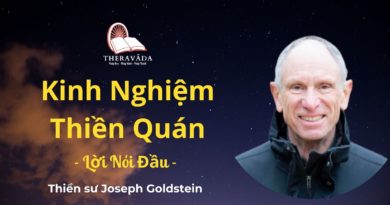A DISCOURSE ON MALUKYAPUTTA SUTTA – VIPASSANA QUESTION IV
A DISCOURSE ON MALUKYAPUTTA SUTTA – VIPASSANA QUESTION IV
Buddha posed the next question for Malukyaputta to answer.
“Ye te jivhavinneyya rasa asayita, asayitapubba, na ca sayasi, na ca te hoti sayeyyanti, atthi te tattha chando va rago va pemam va.”
“How do you answer this, Malukyaputta? Answer me as best you can. There are certain gustatory objects which you have never tasted previously, either in the immediate or remote past, or even at the present moment. Neither can you hope to taste them in the future. Can such objects arouse desire, lust and affection in you?”
Here let me make a passing reference to human weakness for pleasures derived from the sense of taste. Those who have never tasted fruits and cakes imported from other countries have no desire to eat them since they do not have the experience of enjoying them. But people who know how tasteful they are develop a craving for them. In the scriptures there are many instances of people giving up their lives just to satisfy their palate. Defilements can be dispelled if one meditates on eating or tasting, noting the instant when taste just occurs.
FAILURE TO MEDITATE ON RASA ON TASTING
- Rasam bhotva sati muttha, Piyam nimittam manasi karoto. Sarattacitto vedeti, tanca ajjhosa titthati.
- Having tasted rasa, flavour, one loses mindfulness, and getting absorbed in the charms created by it, one feels the onset of desire that tries to imbibe it.
Few ever meditate on eating and taste. Ordinary laymen are not aware of this practice of meditation. Even learned persons do not pay heed to it with the assumption that as one gets the taste of food as it is taken, there is no need to note it with mindfulness. This amounts to being irreverential to the teachings of insight-meditation. Others go so far as to say that meditating on taste is a sheer waste of time. Eating, they say, should be done quickly so that more time can be devoted to meditation.
A majority of the meditating yogis also are guilty of this unmindfulness. Once they fail to note the sense of taste as they take food, they lose mindfulness and become attached to it. And that means they cherish the desire to enjoy pleasure out of eating.
All eatables, therefore, are prepared and cooked so that they are delicious to the taste. When laymen offer food to the monks they take especial care to make it appealing to the palate. This shows how much we give importance to the development of gustatory consciousness. I remember the observation made by the Sayadaw of Taungwaing Galay Taik Kyaung of Moulmein. Once he preached one of his devotees who offered food to him that it was usual for monks to partake of food offered to them with a sense of mindfulness which negates taste, as if what is delectable is repugnant. This drew a protest from the devotee who said, “Reverend Sir! It is most improper that you should view tasteful objects that I have prepared for your enjoyment as repugnant.” It is quite logical for him to say so, because food for the monks is usually prepared by donors so that recipients could eat them with relish. Here the preparation of food to appeal to the sense of taste of those who are going to eat it is the responsibility of the //dayaka//, the donor. For us monks we abide by the principle to regard what is tasteful as repugnant so that defilements cannot take their hold on us.
Priestly conduct, therefore, requires that when monks eat they eat with introspection in accordance with the principles of //paccavekkhana//, self-examination. Unlike laymen monks take food not for enjoyment, not for indulgence, not for physical development, and not for opulence, but for maintenance of the body, for supporting life, for quenching hunger and thirst and for pursuance of the practice of purity of mind. If one can practise //kammatthana// which prescribes concentration on the perception of the impurity of material food, //ahare patikulasanna//, it is all the more to be commended. Regarding this please see Visuddhi Magga. But for our purpose the best would be to go according to Satipatthana Sutta.
- Tassa vaddhunti vedana, aneka rasasambhava; Abhijjha ca vihesa ca, cittamassupahannati. Evam acinato dukkham, ara Nibbana vuccati.
- A multitude of passions such as covetousness and rage, springing from //rasa//, taste, torments him who takes a firm hold of it, with the consequence that his mind becomes burdened with vexation. Nibbana, therefore, remains far away from him who would carry the load of suffering rather than meditate.
No elaboration is needed beyond the fact that smell here is substituted by taste.
There are three basic necessities in life – food, clothing and shelter. The whole world is teemed with hungry millions. The search for food is a great burden for them. People go hell for leather to get it. In the struggle for a living one tries to grab what one wants by all manner of means, fair or foul and one’s anger is aroused when one encounters competitions or opposition from one’s rivals. The result is a troubled mind for everyone. All these stem from the development of desire and attachment on the occasion of failure to meditate, in this case, on taste. When one is overpowered by defilements, one becomes tormented by kamma-actions and action-results that bring about the round of sufferings.
Most people do not care to meditate on food or on eating. It is almost a habit with them to keep food out of his meditating mind. This habit usually hardens. In that case they would be accumulating suffering which burns continually like fire for times to come.
MEDITATING ON RASA BRINGS NIBBANA NEAR
- Na so rajjati rasesu, rasam bhotva patissato; Virattacitto vedeti, tanca najjhosa titthati.
- Passion remains undeveloped in him who recollects with mindfulness the //rasa//, taste, that he has savoured. Thus freed from lust, he refuses to imbibe it.
This is a clear instruction to the yogi to apply insight-meditation to the phenomenon of tongue-consciousness as soon as food has been tasted. It does not say that taste that one has never experienced should be noted with mindfulness. I shall give you an example as to how to meditate on it.
When a monk sits before the table and sees the eatables laid on it, he notes the phenomenon of seeing. As he raises his hand to pick up food, he notes his raising of the hand. As he takes a morsel of food in his hand, he notes that he is taking it. As it is brought towards his mouth, he notes that he is bringing it. As it touches his mouth, he notes the touching. As he opens his mouth, puts the food in it, closes it, brings his hand down, touches the plate with his hands, and in the meanwhile, masticates the food, he notes each of all these proceedings. As his hands move and as he masticates food, he is conscious of the fact that //vayo//, element of motion, is operating. As his hands touch the hot food, he is aware of the working of //tejo//, element of heat. When he feels sweet or sour on the tongue, he notes the qualities of taste. As he is thus noting all the phenomena connected with eating or tasting, he dispels desire, and eventually, lust or //raga//.
When his concentration gets strengthened, he knows taste only as taste and nothing more. It does not occur to him that a particular dish of chicken curry is delicious. It means that he has abandoned the pleasurable tongue-object; and in this manner he does away with defilements.
The experience of the yogis in this Thathana Yeiktha can bear it out. When a meditator eats, he becomes conscious of the fragrant smell and sweet taste that the food generates. But as soon as he feels that he has come to know of this phenomena, the smell, the taste, the nose and tongue-consciousness and the //citta//, mind that notes the consciousness, dissolve away. Under such circumstances //raga// has no opportunity to assert itself, for the yogi has cognized taste just as taste and nothing more. Some of the yogis used to say that as they had been noting the phenomena of tasting, they even failed to recognize the kind of flavour that the food gave. This is quite possible. For, in the absence of such defilements as desire and attachment, no pleasure can be derived out of the food that is taken. Where there is no attachment, one does not take a firm hold of //vedana//, feeling, as if one is going to devour it.
- Yathassa sayato rasam, sevato capi vedanam; Khiyati nopaciyati, evam so caratissato. Evam apacinato dukkham, santike nibbana vuccati.
- Tasting a tongue-object, a yogi just gets the taste, and just feels that he gets it without assimilating it. With him suffering ceases. He should practise meditation in this way; and if he so practises it, he is said to be within sight of Nibbana.
A meditating yogi eats and feels the taste of food like any other individual; but as he denies himself the wherewithal to enjoy that taste, he does not commit either wholesome or unwholesome deeds in relation to taste. It means that taste here cannot bring about formation of Kamma-actions and action-results. Without them no new becoming can arise. And that will be the end of the round of sufferings.
Paticcasamuppada says: //Vedana paccaya tanha// (Feeling begets craving). But as no craving arises when feeling has subsided, //upadana//, clinging, remains unformed. Hence defilements, kamma-actions and action-results become inoperative.
As such causes of suffering are eliminated, a yogi, steadfast in the practice of insight meditation, attains to the stage of //tadanga Nibbana// when peace is established for the duration of that elimination. This can eventually lead to the fulfilment of the Noble Path and its Fruition.
REALIZATION OF THE DHAMMA
Many examples are cited in the Commentaries regarding the attainment of Nibbana as one meditates on the phenomenon of eating. In Sri Lanka of the olden days, there were built many rest houses where monks on their daily rounds for alms could stop awhile to eat. It was usual for them to have their early morning gruel there, and set out for alms-food in the day, coming back again to the same place to have their full meal. Most of them practised insight-meditation while eating and became Arahats. In those days this was the general rule rather than the exception.
In the Commentaries on Puggalapannatti, the following occurs:
“Making strenuous efforts in insight-meditation with the strength of implicit faith in it, an individual can realize the knowledge of the Path and its Fruition while walking, standing, sitting, lying down, or taking light food or heavy meals. No instances exist where he fails to attain wisdom when he so practises it.”
I would like to urge you to note in detail the entire process of eating while you eat. If you are having your meals alone, this can be easily done. For each mouthful of food that you take, you may have about sixty incidents worth noting, and if you go on noting them, it may take you about an hour to finish your meals. But when you happen to eat along with others, this may not be possible; but I urge you to try.









